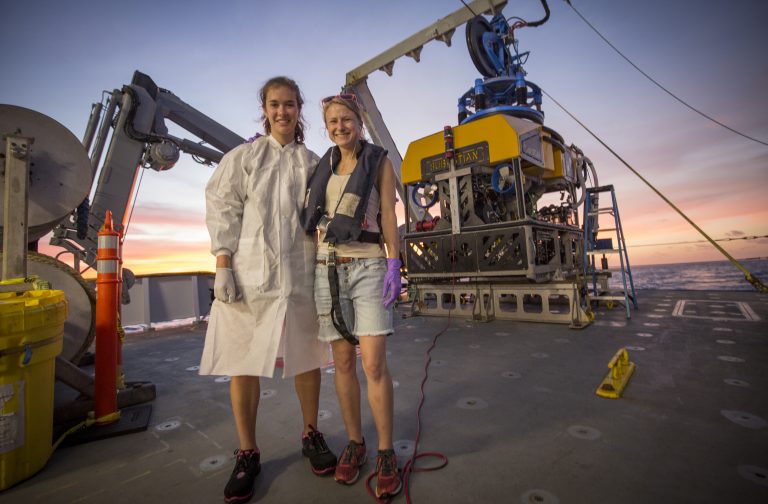Water comprises 60% of our body and 71% of the surface area of the earth; it is simultaneously the most familiar compound and also often forgotten. Even as we are exploring the deep ocean, we find our attention drawn to the elegantly spiraled corals, treacherous looking sharks, and adorable dumbo octopuses rather than the trillions of water molecules supporting all life in the ocean. Understanding the sea’s water chemistry within the Phoenix Islands Protected Area is one of the critical elements of this exploration. By studying what is right in front of us, but often overlooked, we are gaining insight into the most mysterious features of the deep sea.
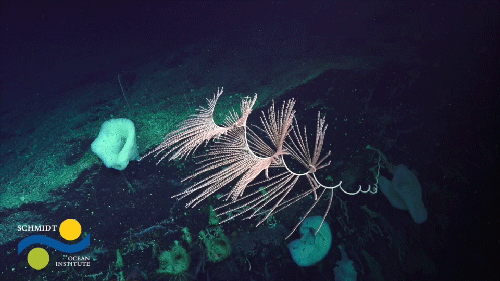
In addition to helping characterize the biological diversity in the deep sea of PIPA, one of my main responsibilities on this cruise is analyzing the chemistry of the water column. As we go deeper down in the ocean, the characteristics of the water masses – such as dissolved oxygen, temperature, pH, and salinity – are changing. Variation in these factors create zones that are habitable for particular types of organisms. When you watch the live feed as we explore the Phoenix Islands seamounts, you can see how the biodiversity and organism composition changes with depth. This change is in part dictated by the chemical characteristics of the water.
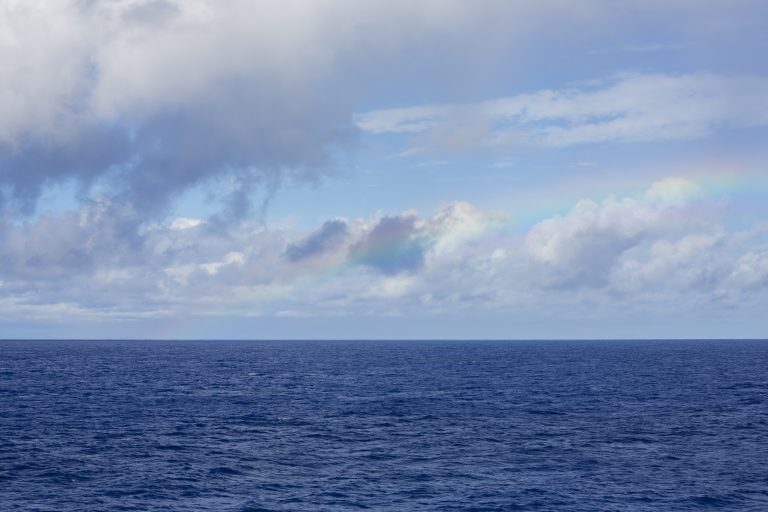
Understanding the properties of the water column also contributes to a better picture of seabed topography. The velocity of the sonar waves R/V Falkor sends to the bottom of the ocean is affected by the temperature and salinity of the water. In collaboration with one of our tirelessly passionate marine technicians, Deb Smith, we can use this information about the properties of water to build more accurate representations of the sea floor, and create maps that we then use to guide our ROV travels.
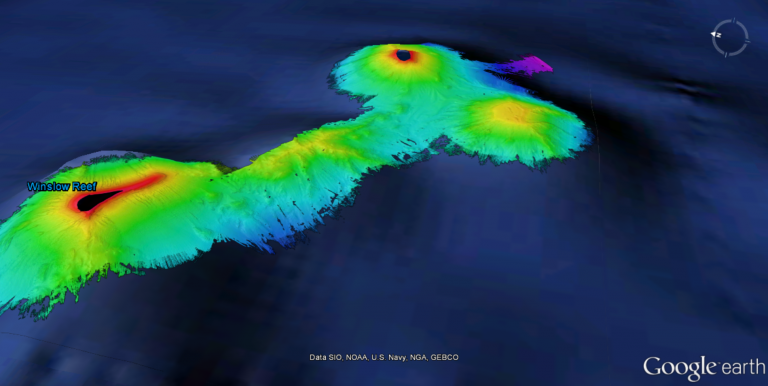
We as humans are also altering the properties of the water, which directly impacts the organisms that live in it. About one third of the CO2 released into the atmosphere from human activity is dissolved in the earth’s water. It is easy to forget, but water itself is a chemical! Carbon dioxide enters the ocean and goes through a chemical reaction with water to form carbonic acid. This process leads to what we know as the phenomenon of ocean acidification: the decrease in the pH of the ocean. This decrease in pH reduces the availability of carbonate ions. Therefore, this excess carbon dioxide produced by burning coal and driving cars is directly impacting the ability for these beautiful animals to survive.
There are two main types of corals: hard corals and soft corals. Soft corals are those we see at the greatest depths. These corals are often colorful and bend and sway with the current. Their skeleton is made up of small elements called sclerites that are composed of a type of calcium carbonate that does not easily dissolve, and these are embedded in the tissues of the coral.
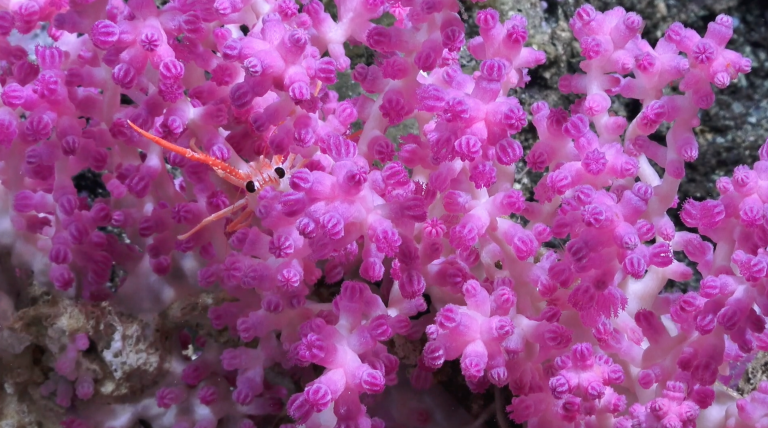
Hard corals rely on the chemistry of the ocean, using carbonate ions to secrete the calcium carbonate that forms their structural skeleton. The amount of carbonate ions available for corals to use changes in different areas of the ocean, typically decreasing at greater depths. Sometimes the scientists on this trip talk about the calcium carbonate “saturation state” of the water. This value is a way of quantifying the availability of carbonate ions and is affected by water properties like temperature and pH. An area of the ocean with a low saturation state makes it much more difficult for the coral to form its skeleton, and after the coral dies, the skeleton will dissolve. Therefore, understanding the presence and absence of this ion in the water gives insight into the different zones of the ocean that provide a habitable space for corals, which in turn provide habitat for many other species.
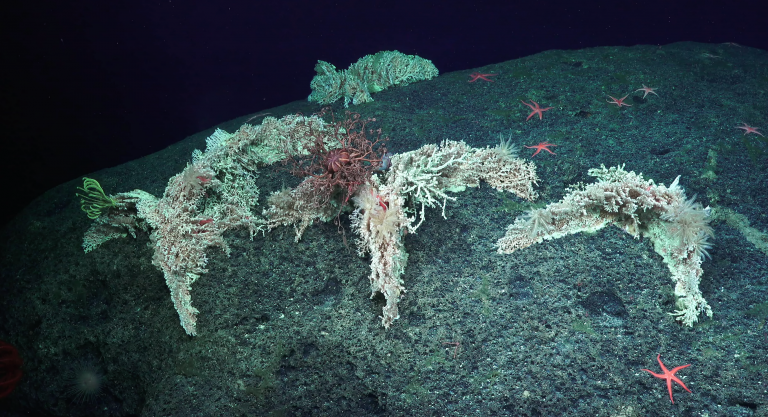
Being in the midst of this deep-sea exploration, I have been able to see with my own eyes the magnificence of these deep-sea corals and the abundance and diversity of life they support. It makes me reflect on how our everyday actions directly affect not only the survival of the corals, but also the sharks that lay their eggs there, the squat lobsters that build a home within the polyps, and the brittle stars that hang on to gather nutrients. We can see how connected we are to these ocean habitats, and it reminds us of our inexorable tie to their conservation.
